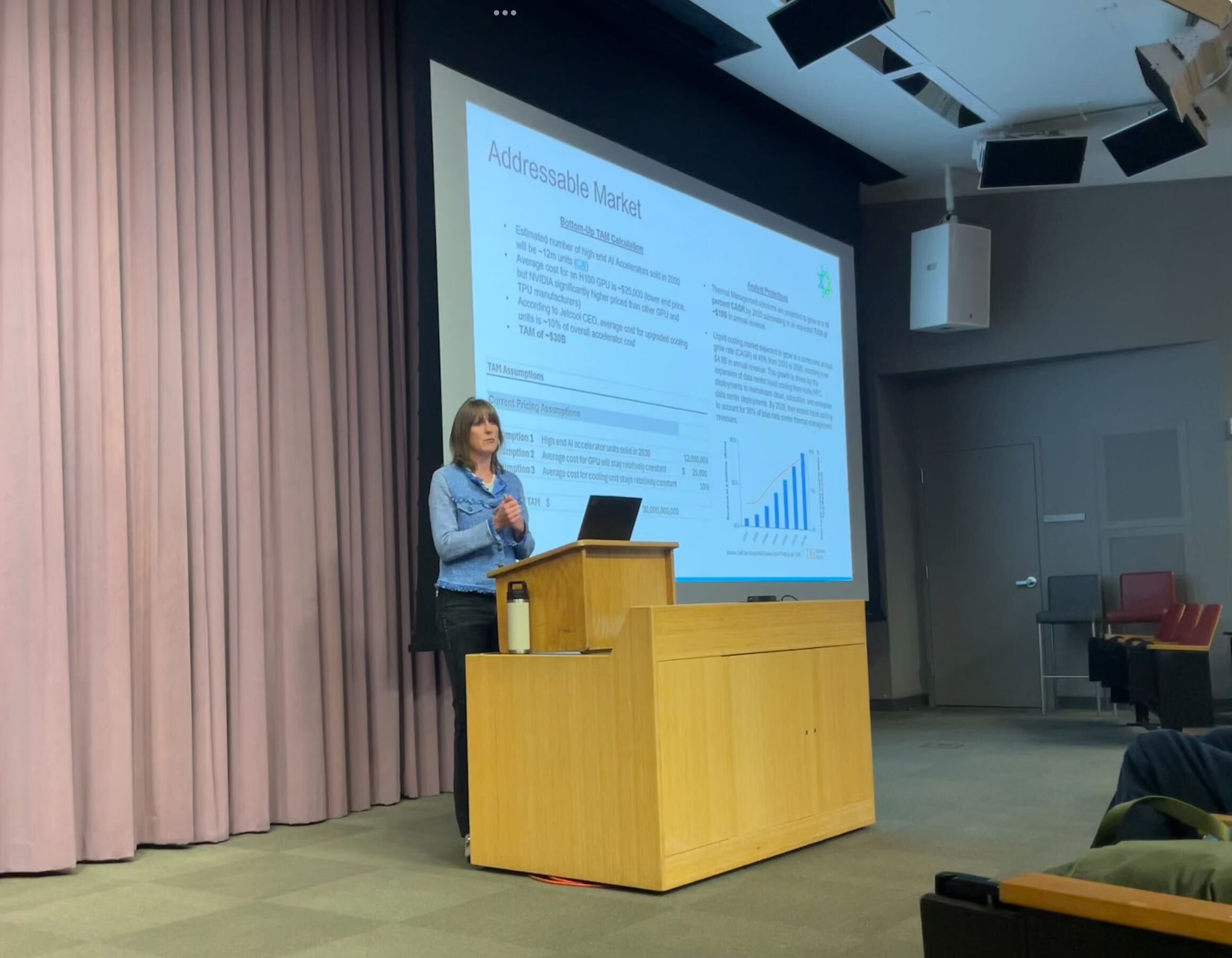Mosquito-borne dengue fever cases surge at popular US vacation destination – Fox News

Report on Dengue Virus Proliferation in Hawaii and Alignment with Sustainable Development Goals
This report details the recent surge in dengue virus cases in Hawaii, analyzing the public health implications through the framework of the United Nations Sustainable Development Goals (SDGs). The situation underscores the critical importance of robust health systems and international cooperation, directly aligning with SDG 3 (Good Health and Well-being), SDG 11 (Sustainable Cities and Communities), and SDG 13 (Climate Action).
Public Health Analysis and Impact on SDG 3 (Good Health and Well-being)
The increase in dengue cases presents a direct challenge to achieving SDG Target 3.3, which aims to end the epidemics of communicable diseases. The management and containment of this vector-borne disease are essential for ensuring healthy lives and promoting well-being for residents and visitors.
Current Case Statistics
- A total of 12 dengue cases have been confirmed in Hawaii this year.
- Case Distribution: 11 cases on Oahu and one case on Maui.
- Source of Infection: The latest case was identified in an individual with a travel history to a dengue-endemic region, highlighting the global nature of disease transmission.
- National Context: Across the United States, 1,984 dengue cases have been reported in 2024, indicating a broader trend that requires coordinated public health responses.
Disease Characteristics and Management
Effective patient care and public awareness are fundamental to mitigating the health impacts of dengue. While there is no specific medication for the virus, supportive care is crucial.
- Symptoms: Patients typically present with fever, nausea, vomiting, rash, and significant aches and pains (muscles, joints, bones, or behind the eyes).
- Treatment Protocol: Management focuses on symptomatic relief, including rest, hydration, and the use of acetaminophen for pain and fever control.
- Vaccination: A vaccine is available but is limited to children aged 9-16 with a prior history of dengue infection who reside in endemic areas.
Environmental Factors and Linkages to SDG 11 and SDG 13
The spread of dengue is intrinsically linked to environmental conditions, making vector control a key component of building sustainable communities and addressing the impacts of climate change.
Vector Control and Sustainable Communities (SDG 11)
Creating safe, resilient, and sustainable human settlements, as outlined in SDG 11, requires proactive environmental management to eliminate mosquito breeding grounds. The Hawaii Department of Health (DOH) has emphasized that while dengue is not currently endemic, the presence of the mosquito vector necessitates community-wide action.
- Eliminate Standing Water: Mosquitoes breed in stagnant water. Communities are urged to regularly empty water from containers such as buckets, planters, rain barrels, and even small cups.
- Community Vigilance: Pouring out standing water is a simple yet highly effective measure to reduce mosquito populations and minimize disease transmission risk.
Climate Change Implications (SDG 13)
Dengue is prevalent in tropical and subtropical climates globally. Climate change threatens to expand the geographical range of mosquito vectors, potentially increasing the risk of local transmission in new areas. Addressing vector-borne diseases is therefore an integral part of climate action, as rising global temperatures could exacerbate public health challenges.
Strategic Recommendations for Disease Prevention and Control
A multi-stakeholder approach, reflecting the spirit of SDG 17 (Partnerships for the Goals), is necessary for effective prevention. This involves collaboration between health authorities, communities, and individuals.
Public Health Directives and Individual Responsibility
The Hawaii DOH and the Centers for Disease Control and Prevention (CDC) have issued clear guidelines for preventing mosquito-borne diseases.
- Post-Travel Precautions: Travelers returning from dengue-endemic areas should diligently prevent mosquito bites for three weeks to avoid introducing the virus to local mosquito populations.
- Medical Consultation: Individuals developing symptoms within two weeks of travel should seek immediate medical evaluation.
- Personal Protective Measures:
- Utilize EPA-registered insect repellents containing effective ingredients like DEET or picaridin.
- Wear long-sleeved shirts and long pants, especially during peak mosquito activity at dusk and dawn.
- Treat clothing with permethrin for prolonged outdoor activities.
- Ensure homes have secure screens on windows and doors to prevent mosquito entry.
- Use mosquito nets in high-risk areas.
Analysis of Sustainable Development Goals in the Article
1. Which SDGs are addressed or connected to the issues highlighted in the article?
The article on the surge of dengue fever cases in Hawaii and other regions primarily addresses issues related to public health, disease control, and environmental management. Based on this, the following Sustainable Development Goals (SDGs) are relevant:
- SDG 3: Good Health and Well-being: This is the most directly relevant SDG. The article focuses on dengue fever, a communicable disease, discussing its transmission, symptoms, rising case numbers, and prevention methods. This aligns with the goal of ensuring healthy lives and promoting well-being for all at all ages.
- SDG 11: Sustainable Cities and Communities: The article connects to this goal through its emphasis on community-level prevention measures. The recommendation to eliminate “standing water where mosquitoes breed” in items like “buckets, water-catching plants… planters, rain barrels and even cups left outside” is a direct call for managing the local environment within communities to make them safer and more resilient against disease vectors.
2. What specific targets under those SDGs can be identified based on the article’s content?
Based on the article’s discussion of dengue fever, the following specific SDG targets can be identified:
-
SDG 3: Good Health and Well-being
- Target 3.3: By 2030, end the epidemics of AIDS, tuberculosis, malaria and neglected tropical diseases and combat hepatitis, water-borne diseases and other communicable diseases.
The article directly addresses this target by focusing on dengue, a mosquito-borne communicable disease. It highlights the “surge” in cases in Hawaii and mentions outbreaks in other countries, demonstrating the ongoing challenge of combating such diseases. The entire discussion on prevention and control is aimed at fulfilling this target. - Target 3.d: Strengthen the capacity of all countries, in particular developing countries, for early warning, risk reduction and management of national and global health risks.
This target is reflected in the actions of health authorities mentioned in the article. The “Hawaii Department of Health (DOH)” is actively reporting cases, and the Centers for Disease Control and Prevention (CDC) is providing data on U.S. cases. The DOH’s issuance of an “alert” calling for travelers to “take precautions” is a clear example of early warning and risk management to control the spread of a health risk.
- Target 3.3: By 2030, end the epidemics of AIDS, tuberculosis, malaria and neglected tropical diseases and combat hepatitis, water-borne diseases and other communicable diseases.
-
SDG 11: Sustainable Cities and Communities
- Target 11.6: By 2030, reduce the adverse per capita environmental impact of cities, including by paying special attention to air quality and municipal and other waste management.
While not explicitly about waste management, the article’s advice to eliminate standing water directly relates to managing the local environment to prevent health hazards. The instruction that “Pouring out containers of standing water can significantly reduce the potential for mosquito breeding” is a form of community-level environmental management crucial for creating healthier living spaces.
- Target 11.6: By 2030, reduce the adverse per capita environmental impact of cities, including by paying special attention to air quality and municipal and other waste management.
3. Are there any indicators mentioned or implied in the article that can be used to measure progress towards the identified targets?
Yes, the article contains both direct and implied indicators for measuring progress:
-
Indicators for SDG 3 Targets
- For Target 3.3: The article provides direct quantitative data that can be used as an indicator for the incidence of communicable diseases.
- Indicator: Number of reported cases of dengue fever.
Evidence from the article: “the state recently reporting the 12th case so far this year” in Hawaii, and “In 2024, there were 1,984 dengue cases in the U.S., according to CDC data.” Tracking these numbers over time measures progress in controlling the disease.
- Indicator: Number of reported cases of dengue fever.
- For Target 3.d: The article implies a qualitative indicator related to the capacity for health risk management.
- Indicator: Issuance of public health alerts and advisories by health authorities.
Evidence from the article: “In its alert, the Hawaii DOH called for travelers returning from dengue-endemic areas to take precautions to prevent mosquito bites for three weeks.” The existence and frequency of such alerts indicate an active system for early warning and risk reduction.
- Indicator: Issuance of public health alerts and advisories by health authorities.
- For Target 3.3: The article provides direct quantitative data that can be used as an indicator for the incidence of communicable diseases.
-
Indicator for SDG 11 Target
- For Target 11.6: The article implies an indicator related to community action for environmental health.
- Indicator: Implementation of public health campaigns and community actions to eliminate mosquito breeding sites.
Evidence from the article: The specific recommendations to “eliminating standing water where mosquitoes breed” and “Pouring out containers of standing water” suggest that progress can be measured by the adoption of these practices at the community level, often driven by public health campaigns.
- Indicator: Implementation of public health campaigns and community actions to eliminate mosquito breeding sites.
- For Target 11.6: The article implies an indicator related to community action for environmental health.
4. Summary Table of SDGs, Targets, and Indicators
| SDGs | Targets | Indicators Identified in the Article |
|---|---|---|
| SDG 3: Good Health and Well-being | Target 3.3: End the epidemics of… communicable diseases. | Number of reported cases of dengue fever (e.g., “12th case so far this year” in Hawaii; “1,984 dengue cases in the U.S.”). |
| SDG 3: Good Health and Well-being | Target 3.d: Strengthen capacity for early warning, risk reduction and management of national and global health risks. | Issuance of public health alerts and advisories by health authorities (e.g., “In its alert, the Hawaii DOH called for travelers… to take precautions”). |
| SDG 11: Sustainable Cities and Communities | Target 11.6: Reduce the adverse per capita environmental impact of cities… including… waste management. | Implementation of community actions to eliminate mosquito breeding sites (e.g., “eliminating standing water where mosquitoes breed”). |
Source: foxnews.com

What is Your Reaction?
 Like
0
Like
0
 Dislike
0
Dislike
0
 Love
0
Love
0
 Funny
0
Funny
0
 Angry
0
Angry
0
 Sad
0
Sad
0
 Wow
0
Wow
0

















































:focal(1500,1000)/https://media.globalcitizen.org/a6/9a/a69a4720-d8a1-4715-b596-18738d03c05c/rotary_polio_hero_image.jpg?#)






/countries/sri-lanka/photo-credit---dmc-sri-lanka.tmb-1200v.jpg?sfvrsn=dc298bcc_1#)















